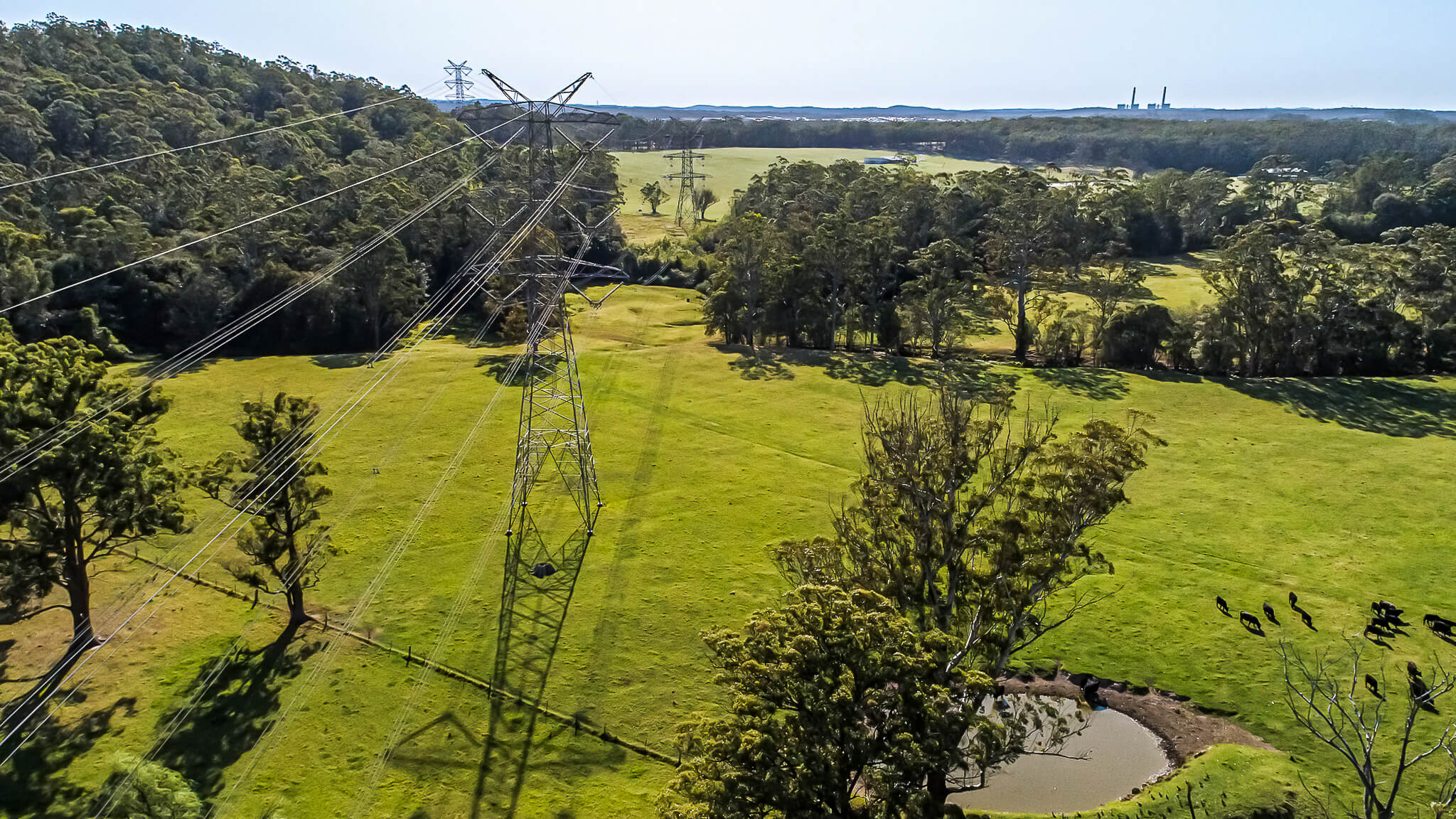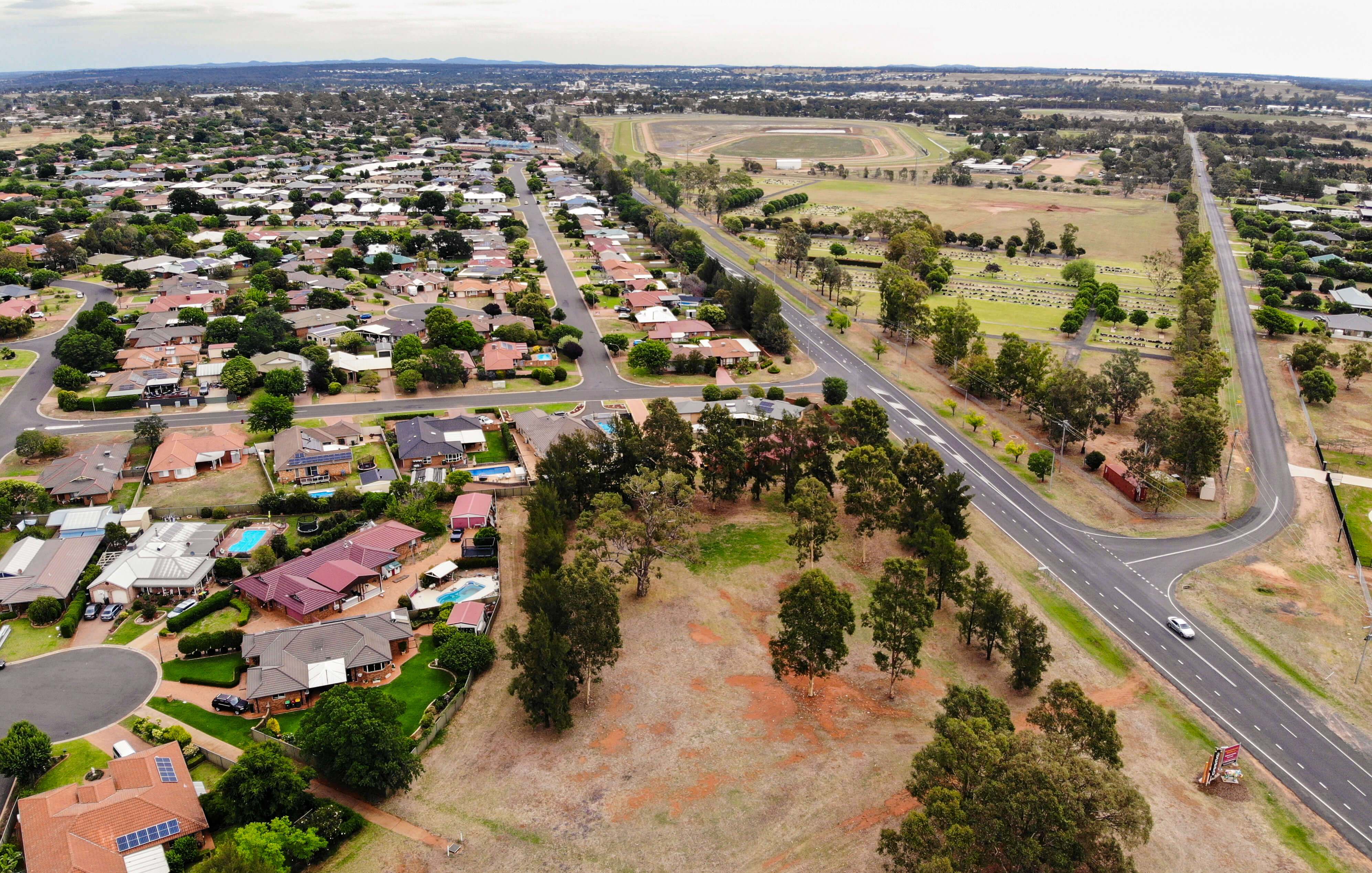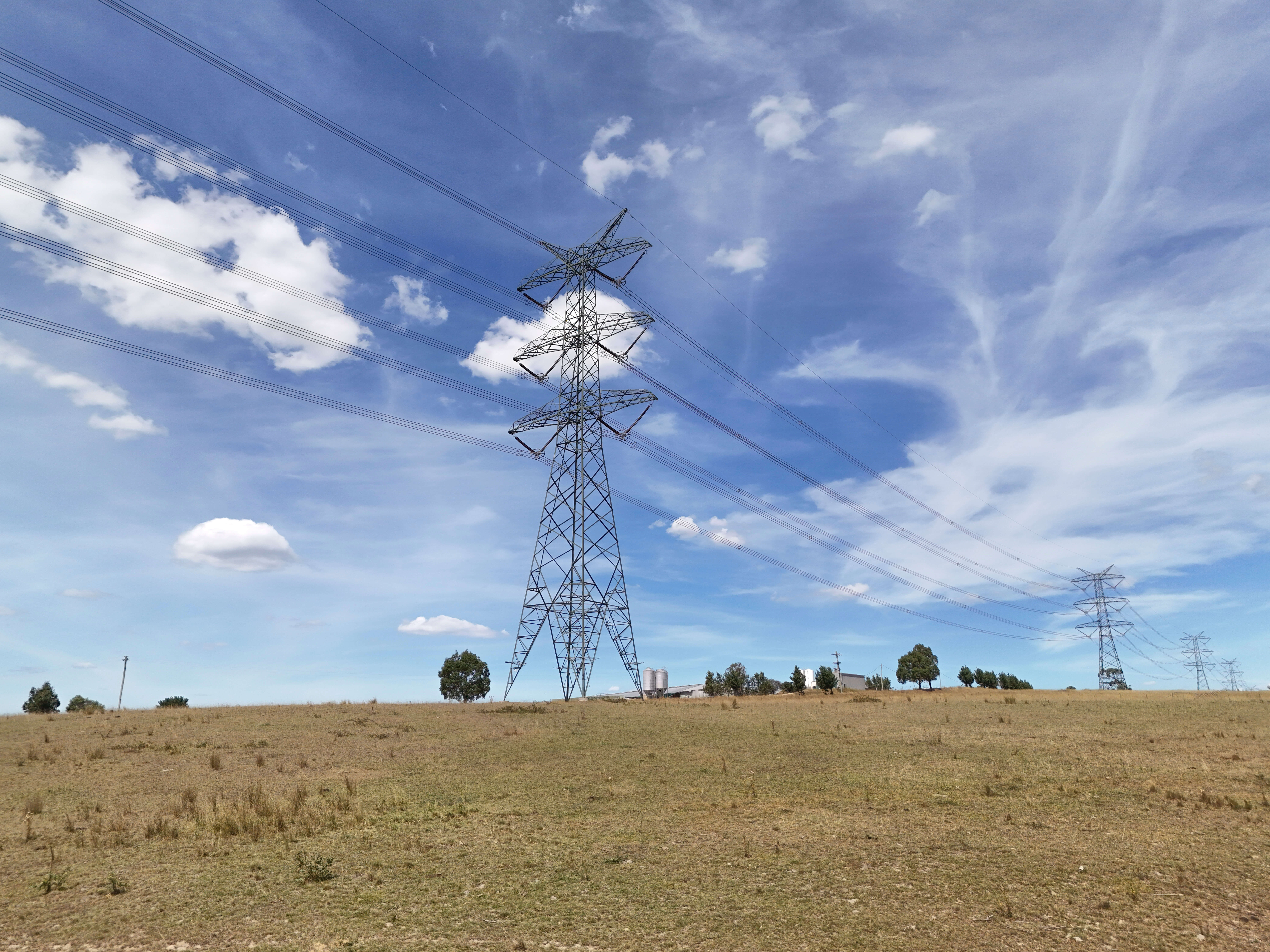Delivering renewable energy
We're delivering NSW's renewable energy zones to provide a clean, affordable and reliable power supply for energy consumers across NSW. Renewable energy zones are the key part of our work to upgrade the grid to unlock clean, reliable and affordable energy for everyone in the state.
Learn more about renewable energy zones
What goes in an easement?
REZs require new power lines to enable the transfer of electricity from wind, solar and storage projects to energy consumers.
500 kilovolt (kV) double circuit lines form the backbone of most of the transmission projects that we're delivering as part of our work under the Electricity Infrastructure Roadmap.
The primary advantages of using 500 kV transmission are:
- greater power transfer capacity per circuit (meaning fewer lines and easements are required)
- reduced losses and improved efficiency across long distances.
These factors are critical in modern grid planning, especially for REZ connections.
These lines requires an easement of at least 70 metres wide. 500kV is the highest voltage used on the NSW network and has the advantage of reducing the number of circuits and lines required. This also helps us to minimise the land required for easements.
Transmission lines which connect to renewable energy generation projects like wind and solar farms will generally be 330 kV lines and either single or double circuit. These have a minimum easement width of 60 metres for each line. The specific number of circuits and lines may vary for each generation project depending on its size.
Overhead lines in transmission easements will be supported by steel lattice towers which are between 45 and 70 metres high. The towers will generally be spaced around 400 to 600 metres apart, but these can vary depending on the local geography and other factors.
What activities are permitted in an easement?
Permitted activities
The following activities are generally permitted within transmission easements.
However, they may be subject to certain restrictions and approvals for safety and operational reasons:
- agriculture and grazing (see restrictions outlined below)
- landscaping and paving
- installing drainage, water and sewer pipes
- movement of vehicles and machinery
- parking light vehicles.
Prohibited activities
Activities which are not permitted within transmission line easements include:
- building houses
- erecting scaffolding
- storing materials in industrial bins and skips
- stockpiling excavated materials
- storing flammable liquids or gases
- fuelling and repairs to vehicles, plant and equipment
- moving vehicles and machinery that exceed the permitted height
- parking large trucks and caravans
- loading and unloading large trucks
- storage or detonation of explosives
- flying kites or any remote controlled or unmanned aerial vehicles (such as drones).
This list is not exhaustive, and there may be other restrictions or prohibitions. Please check with EnergyCo or the network operator.
Agricultural activities
We appreciate that agricultural activities are essential to our nation as well as the livelihood of communities in our regions.
NSW has around 13,000 kilometres of existing high-voltage transmission lines forming the backbone of the state’s electricity network. These transmission corridors already successfully coexist with a wide range of agricultural operations, including grazing, cropping, and viticulture. Transmission easements are carefully managed to maintain safety and access while allowing ongoing productive use of the land beneath and around the infrastructure.
As we plan and develop new transmission projects to connect our REZs, we're working closely with landowners as we design transmission routes to understand current and future land uses and help minimise impacts to agricultural activities.
| Activity | Requirements |
|---|---|
| Aerial operations | Aerial activities can continue in the vicinity of transmission lines, as they are clearly visible from the air. Flying aircraft need to be aware of the location of transmission lines and structures. Where possible we will avoid putting transmission lines where low-flying aerial operations take place. Drone operators will need to maintain a safe distance from transmission lines to avoid collision. The Civil Aviation Safety Authority (CASA) has requirements for all pilots and drone operators. We encourage you to contact CASA for specific information relating to your aerial operations. For more information, visit www.casa.gov.au |
| Cropping | Permitted up to 30 metres from the base of a transmission structure to provide clearance for maintenance access. |
| Livestock grazing | Grazing can continue as normal under transmission lines. |
| Utilities including drainage, sewer and water | Permitted if more than 20 metres from transmission structures and pipes are made of earthenware or plastic. Electrically conductive materials such as metal pipes must not be installed within 30 metres of tower structures. |
| Fencing | Metal fences should never touch a transmission structure. Fencing within or near an easement must be earthed and isolated. Further details are provided later in this fact sheet. |
| Irrigation | Irrigation low to the ground is generally permitted. Water streams should never be directed at transmission lines. |
| Vehicle and machinery movements | Vehicles and machinery passing under transmission lines must be limited to a height of 4.3 metres, unless otherwise agreed with EnergyCo. In addition to movements, excavation or construction works must not take place within the easement. |
| Ploughing and direct drilling | Permitted up to 20 metres from the base of a transmission structure. This buffer is in place to ensure machinery does not disturb transmission structure earthing. |
| Planting trees and vegetation | Trees, shrubs or bushes must not be planted or placed within the easement. |
Clearance heights under transmission lines
Vehicles and machinery can pass underneath transmission lines as long as they meet the height restrictions.
If your land is identified for an easement, we will work with you during the easement project design process to identify any specific constraints related to your land use.
Equipment with an extendable boom, such as excavators, cherry pickers and cranes, require trained and accredited operators to work under transmission lines. For safety requirements when working near transmission lines, refer to SafeWork NSW for further information.
Fencing
Metal fences near transmission structures can be an electrical safety hazard. This is due to the transmission line transferring voltages onto the metal fence.
Fences within or near a transmission line easement must be ‘earthed’ for safety reasons, which means they're connected to the ground and therefore kept at the same voltage potential as the earth. Metal fences must be at least 25 metres from a transmission structure.
Transmission easements will not be fenced. We will take into consideration the location of any existing metal fences when we design the transmission route.
We encourage landowners to contact us before installing any new fencing near a transmission easement so we can provide guidance on your specific fencing requirements.
GPS and radio signals
The signals from global positioning systems (GPS) are a much higher frequency than transmission lines and therefore should not be disrupted.
Transmission lines can interfere with radio frequencies where the signals are already weak. New transmission lines are designed to minimise this interference. This will be assessed during each project’s environmental impact statement and detailed design process, with mitigations included in the design where feasible.
Fire management
We understand the risk of bushfires is a concern for is a key consideration as we plan the REZ transmission network.
Transmission lines are built to withstand most bushfire conditions. They are also designed to prevent the risk of starting fires from fallen conductors. Fire cannot travel along transmission lines as they are not made from flammable materials. Transmission lines are operated remotely and can be shut down quickly in the event of a bushfire.
To reduce the risk of fire in a transmission easement, vegetation should be kept to a minimum height and density within transmission easements. Grazing livestock can help to manage vegetation in paddocks containing an easement.
Transmission lines will not prevent aerial firefighting activities from being carried out. Transmission lines are generally clearly visible from the air even when there’s smoke, so aerial firefighting can continue.
We will work with landowners during the easement acquisition process to understand individual property constraints in relation to fire management. This includes discussing any existing aerial operations and air strip locations.
Electric and magnetic fields
Electric and magnetic fields (EMFs) are a natural part of the environment and are produced wherever electricity or electrical equipment is used. According to health authorities, including the World Health Organisation and the Australian Radiation Protection and Nuclear Safety Agency, EMFs from electrical transmission lines are not considered a risk to human health.
Further information can be found in the following resources:
Detailed assessment of EMFs from the project will be carried out as part of the environmental assessment process.
Operation and maintenance
Once the project is operational, we will carry out regular on-site maintenance and inspections on the transmission lines. Fault and emergency crews may also attend site occasionally when required to respond to unplanned events to ensure safety and carry out repairs. Landowners will be kept informed about any maintenance activities and access arrangements.
The following requirements will apply to all development proposals in a transmission line easement:
- clear access must be maintained to transmission infrastructure for operation and maintenance
- an exclusion zone of 30 metres applies from any part of a transmission line structure, and 17 metres from the centre of a transmission line
- a height limit of 4.3 metres applies for all structures and development activities
- all metal structures must be earthed
- structures must be designed so they don’t encourage climbing.
The following proposals will generally be permitted within project easements, subject to our approval and adherence to the mandatory requirements:
- carports, sheds, stables, detached garages, pergolas and unroofed verandas, provided they are non-habitable
- sporting and recreational facilities, including tennis courts, basketball courts, playgrounds and exercise equipment
- plant nurseries and community gardens if mature plants are within the height limit and all fixed structures are outside the exclusion zone
- in-ground swimming pools, provided that any power connection is electrically isolated outside the easement
- lighting which is electrically isolated outside the easement
- roads and pathways
- low voltage utilities and services
- earthwork, excavation and quarrying, including the construction of dams, basins, swales, drains and channels no more than three metres deep (subject to prior consultation with us to ensure it doesn’t affect the safe operation and reliability requirements for the equipment).
If you’re unsure if your development is permitted, please contact us to discuss your individual circumstance.
The following developments are not permitted in any part of a REZ transmission easement:
- inhabitable buildings, houses, accommodation, camp sites, facilities and offices
- above-ground swimming pools
- fixed plant and equipment.
Subdivision proposals will be assessed by EnergyCo on a case-by-case basis. New subdivision boundaries must not be located within the easement.
When seeking permission from us, you should include the following details:
- your contact information and details of the planning authority
- a description of the proposal, including measurements and any potential impacts to the infrastructure
- detailed plans and/or technical drawings which are to-scale and show all relevant distances and measurements.
Planning authorities will automatically refer any development applications to us where relevant. To avoid delays to your application, we recommend seeking our permission before you lodge a development application with the planning authority.
Our permission is given as the holder of the easement only and does not constitute development approval.
Get in touch with EnergyCo
1800 118 894 (9am to 5pm, Monday to Friday)
Sign up for our Powering NSW e-newsletter.



